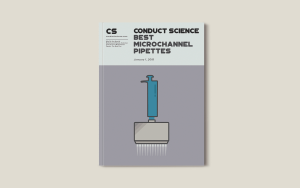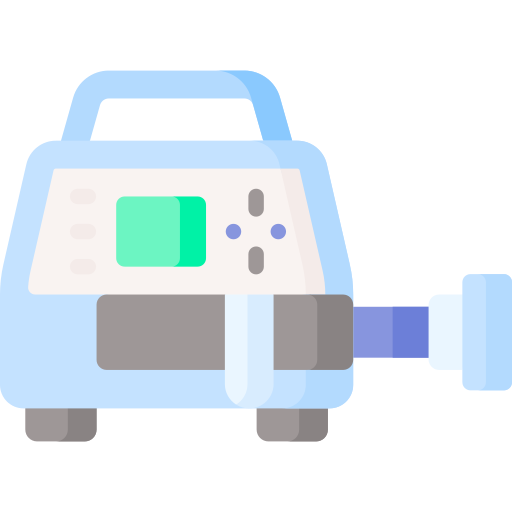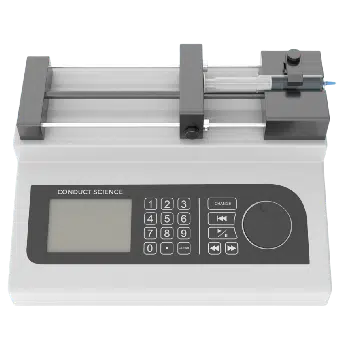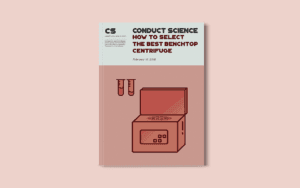
Best Microchannel Pipettes: A Comprehensive Guide
Introduction Pipetting, at first glance, would seem a fairly simple and easy task. Essentially described as glass or plastic tubes used to measure and transfer

Given that mouse models play a crucial role in preclinical drug discovery and development, it’s imperative to devise a system that ensures the consistent and reproducible administration of drugs to mice. This system should ideally facilitate the collection of blood samples at regular intervals throughout a specified timeframe. Among the indispensable tools in laboratory settings are syringe pumps and infusion pumps.[1]
While both serve the crucial function of delivering fluids to laboratory animals, they possess unique characteristics tailored to specific medical applications. In this comprehensive guide, we will delve into the nuances of syringe pumps and infusion pumps, exploring their applications, types, and key considerations for purchasing.
A syringe pump is a medical device designed to deliver precise amounts of fluids via a syringe attached to the pump mechanism. These pumps typically feature programmable settings for infusion rates, volume, and dosing intervals.[2] Syringe pumps are characterized by their compact size, making them suitable for use in various settings.

The main components of the Syringe Pump include:[3]
An infusion pump is a medical device utilized for administering fluids, medications, or nutrients intravenously at controlled rates over a predetermined period. Unlike syringe pumps, infusion pumps can accommodate larger volumes of fluids, such as IV bags or reservoirs, enabling continuous or intermittent infusions.[5] Infusion pumps are equipped with advanced features, including flow rate adjustments, occlusion alarms, and dose calculation capabilities, ensuring precise delivery of medications and fluids while minimizing the risk of complications.
The main components of the Infusion Pump include:[7]
Syringe pumps are widely employed in laboratory and animal research settings for various purposes. These pumps excel in delivering small volumes of fluids at a controlled rate, making them ideal for administering medications such as potent drugs or anesthesia with precision.[8] They can be used in:
Infusion pumps, on the other hand, are designed for delivering larger volumes of fluids over an extended period.[9] Unlike syringe pumps, infusion pumps can accommodate a broader range of fluids and medications, making them versatile tools in various laboratory settings. They provide continuous and controlled infusion, ensuring receiving the necessary medications or fluids at the prescribed rate and duration. They can be used in:
Syringe pumps come in different variations to accommodate various laboratory needs. Programmable syringe pumps offer flexibility in dosage and infusion rates. [10] Infusion pumps are similarly diverse, ranging from volumetric pumps, which deliver fluids at a constant rate, to syringe drivers, which can accommodate both syringes and IV bags for versatile infusion options. [11]
In laboratory and animal settings, selecting between a syringe pump and an infusion pump is contingent upon the unique demands of the experimental context, weighing considerations such as infusion volume, precision, and mobility.
By comprehensively grasping the diverse applications, variations, and critical purchasing factors associated with these indispensable devices, researchers can enhance the care and treatment outcomes of laboratory animals with assurance and precision, thus advancing scientific endeavors with informed decision-making.
Check out our Classic Syringe Pump if you’re looking for the best!

Vanja works as the Social Media and Academic Program Manager at Conduct Science. With a Bachelor's degree in Molecular Biology and Physiology and a Master's degree in Human Molecular Biology, Vanja is dedicated to sharing scientific knowledge on social media platforms. Additionally, Vanja provides direct support to the editorial board at Conduct Science Academic Publishing House.

Introduction Pipetting, at first glance, would seem a fairly simple and easy task. Essentially described as glass or plastic tubes used to measure and transfer

INTRODUCTION AND BRIEF HISTORY One of the most important pieces of equipment in the laboratory is the centrifuge, which facilitates the separation of samples of

INTRODUCTION AND BRIEF HISTORY One of the most important pieces of equipment in the laboratory is the centrifuge, which facilitates the separation of samples of

The stereotaxic approach of a target structure in the rodent brain requires sufficient theoretical knowledge on the specific locations of different brain regions. The stereotaxic
